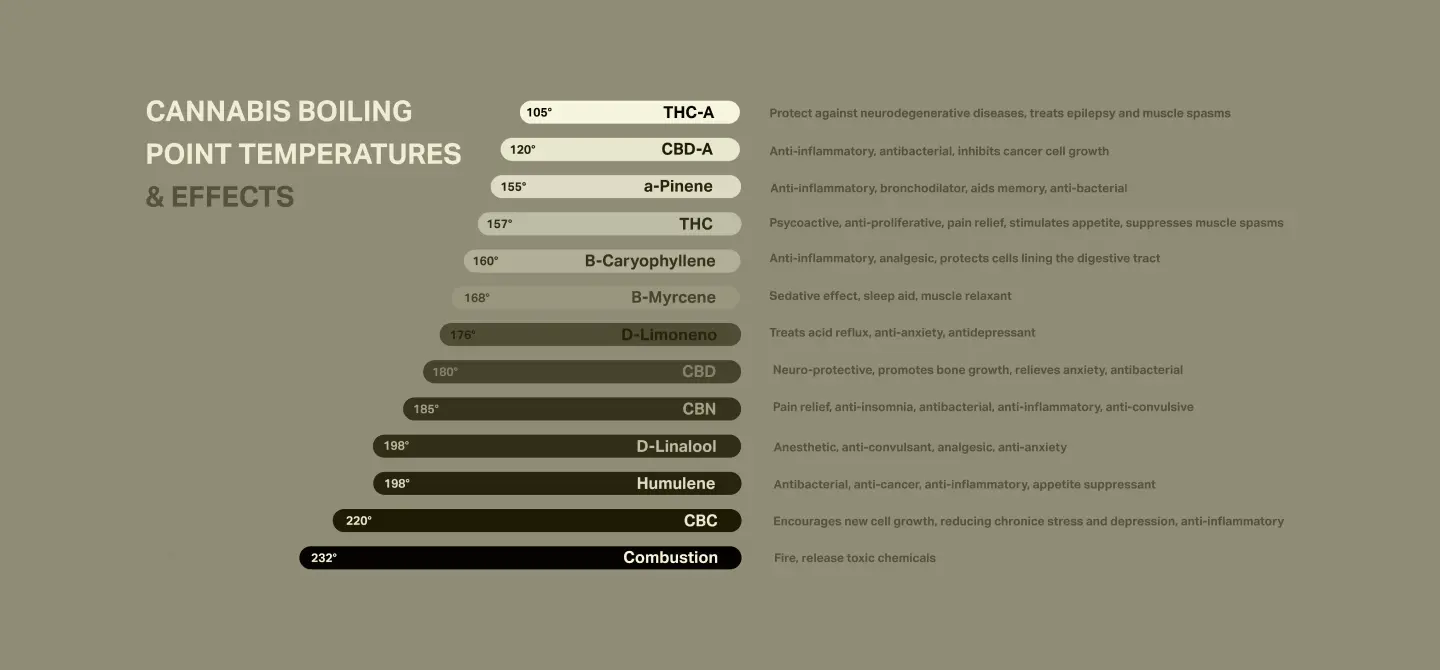RESOURCES
Harm reduction
Patient Support
Responsible Medicating
Further Resources
This page is designed to provide patients with all key information about the Cancard in one, easy to follow place.
The following page will display information relating to cannabis, and the science behind it; how to reduce harm when medicating with cannabis; what kinds of support Cancard will offer patients who sign up for a card; and a guide to responsible medicating, particularly when medicating away from home.
The Cancard team always wants to hear from our patients and the experiences they have using cannabis as medicine. If you have any suggestions for additions to this page, please email the team at hello@cancard.co.uk
USEFUL
INFORMATION
Firstly, it is important to understand what cannabis is. There are over 4500 varieties of cannabis, each with slightly different properties. It isn’t a one sized fits all medicine, it is a whole library of medicines that can be utilised for different conditions.
Terminology
Terpenes
Terpenes are a large and diverse class of organic compounds, produced by a variety of plants, particularly conifers, and by some insects. They often have a strong odor and may protect the plants that produce them by deterring herbivores and by attracting predators and parasites of herbivores. When we talk about terpenes and cannabis, we are talking about the same aromatic oils that give many plants, including cannabis its distinctive smell. These compounds each have different therapeutic uses and are found in different combinations in different strains of cannabis.Linalool
This terpene is the most responsible for the recognizable marijuana smell with its spicy and floral notes. Linalool is also found in lavender, mint, cinnamon and coriander. What’s interesting is that just like those aromatic herbs, it has very strong sedative and relaxing properties. Patients suffering from arthritis, depression, seizures, insomnia and even cancer, have all found aid in this amazing terpene. Some well known linalool strains are Amnesia Haze, Special Kush, Lavender, LA Confidential, and OG Shark.Alpha-Bisabolol
Alpha-bisabolol (also known as levomenol and bisabolol) has a pleasant floral aroma and can also be found in chamomile flower and candeia tree. This terpene found its use primarily in the cosmetics industry, but lately it has caught the attention of researchers since it showed medical benefits, especially in cannabis. Alpha-bisabolol proved to be effective in treating bacterial infections and wounds and is a great antioxidant with anti-irritation and analgesic properties. It can be found in strains like Harle-Tsu, Pink Kush, Headband, OG Shark, and ACDC.Humulene
Humulene was the first terpene found in hops. Its aroma contains earthy, woody and spicy notes. Besides cannabis, it can be also found in clove, sage, and black pepper. It has a variety of medical properties. Early research has shown humulene to be anti-proliferative, meaning it prevents cancer cells from growing. Also, it proved to be effective in suppressing appetite, making it a potential weight loss tool. Furthermore, like many other cannabis terpenes mentioned above, it also reduces inflammation, relieves pain and fights bacterial infections. You can find humulene in strains like White Widow, Headband, Girl Scout Cookies, Sour Diesel, Pink Kush and Skywalker OG.Borneol
Borneol, with its herbal minty scent, can be found in herbs like rosemary, mint and camphor. This terpene is a good natural insect repellent which makes it great in preventing diseases like the West Nile virus, being passed by ticks, fleas, mosquitoes etc. One study found that borneol kills breast cancer cells. It’s also widely used in Chinese traditional medicine, in acupuncture to be precise. Strains high in borneol are Amnesia Haze, Golden Haze, K13 Haze.Geraniol
Besides cannabis, geraniol can be found in lemons and tobacco. Its smell reminds of rose grass, peaches and plums. It’s usually used in aromatic bath products and body lotions. Geraniol has shown a lot of potential as a neuroprotectant and antioxidant. It is present in strains like Amnesia Haze, Great White Shark, Afghani, Headband, Island Sweet Skunk, OG Shark and Master Kush.Myrcene
Myrcene is the most abundant terpene in cannabis, which is where it’s mostly found in nature. In fact, one study showed that myrcene makes up as much as 65% of total terpene profile in some strains. Myrcene smell often reminds of earthy, musky notes, resembling cloves. Also, it has a fruity, red grape-like aroma. Strains that contain 0.5% of this terpene are usually indicas with sedative effects. It has also been reported that myrcene is useful in reducing inflammation and chronic pain, which is why it’s usually recommended as a supplement during cancer treatments. Strains that are rich in myrcene are Skunk XL, White Widow, and Special Kush. Bonus tip: If you want to experience a stronger buzz from marijuana, get yourself a mango and eat it about 45 minutes before smoking. Mango contains significant amount of myrcene, so eating it before consuming cannabis will strengthen the effects of THC and increase its absorption rate.Caryophyllene
Best known for its spicy and peppery note, caryophyllene is also found in black pepper, cinnamon, cloves, and spices like oregano, basil and rosemary. Beta-caryophyllene binds to CB2 receptors, which makes it an ingredient in anti-inflammatory topicals and creams. Caryophyllene is the only terpene that binds to cannabinoid receptors. Besides its analgesic and anti-anxiety properties, some studies have found that caryophyllene has some very promising properties when it comes to alcoholism rehabilitation. A group of scientists performed research on mice and found that this terpene reduces voluntary intake of alcohol. They even recommended caryophyllene for treating alcohol withdrawal symptoms. You can benefit from caryophyllene by using strains like Super Silver Haze, Skywalker and Rock Star.Eucalyptol
Also known as cineole, eucalyptol is the primary terpene of the eucalyptus tree. It has recognizable minty and cool tones in its smell but most cannabis strains do not contain large amounts of it. It usually makes up around 0.06% of a strains complete terpene profile. This terpene has been used in cosmetics as well as medicine. When it comes to its medical value, eucalyptol relieves pain but also slows the growth of bacteria and fungus. Although it is still in the early stages in research, this terpene has shown some promising effects on Alzheimer’s as well. Eucalyptol can be found in Super Silver Haze and Headband.
Delta 3 Carene
This terpene is found in a number of plants like rosemary, basil, bell peppers, cedar and pine. Its aroma is sweet and resembles the smell of cypress tree. When it comes to the medical side of carene, it seems to be mostly beneficial in healing broken bones. That gives hope to patients suffering from osteoporosis, arthritis and even fibromyalgia. What is also interesting about this terpene is that it stimulates our memory and helps memory retention. This is a major point in finding a cure for Alzheimer’s disease.Terpineol
The aroma of terpineol can be best described as floral-like, reminiscent of lilacs, apple blossom, and a little bit citrusy. Terpineol tastes like anise and mint. Terpineol has a pleasant scent, similar to lilac, and is a common ingredient in perfumes, cosmetics, and flavors. It relaxes heavily and it’s usually the one responsible for the notorious couch lock effect. Medical benefits of terpineol also include antibiotic and antioxidant properties. It can be found Girl Scout Cookies, Jack Herer, and OG Kush strains.We are pro GYO
Limonene is the second most abundant terpene in all cannabis strains, but not all strains necessarily have it. As its name says, limonene gives strains a citrusy smell that resembles lemons, which is no surprise as all citrus fruits contain large amounts of this compound. Limonene is used in cosmetics and also in cleaning products.For therapeutic purposes, limonene is known to improve mood and reduce stress. Researchers also found it to have antifungal and antibacterial properties and one research even found it to have a role in reducing tumor size. Strains that have “lemon” or “sour” in their name are usually rich in limonene. High levels of limonene can be found in strains like O.G. Kush, Sour Diesel, Super Lemon Haze, Durban Poison, Jack Herer, and Jack the Ripper.
Alpha-Pinene And Beta-Pinene
These two cannabis terpenes smell like pine trees and that’s also where they can be found in large amounts. Other plants rich in pinene include rosemary, orange peels, basil, parsley and cannabis of course. Like many other, pinene terpenes have an anti-inflammatory effect on humans. But more importantly, they help improve airflow and respiratory functions, while also helping to reduce memory loss related to THC. I know that this can sound weird because we’re talking about cannabis, but if the strain is rich in alpha and beta pinene, it has been reported to help with asthma. Pinene also helps patients with arthritis, Crohn’s disease and cancer. You can find pinene in strains like Jack Herer, Strawberry Cough, Blue Dream, Island Sweet Skunk, Dutch Treat and Romulan.Trans-Nerolido
This one is a secondary terpene found mostly in flowers like jasmine, lemongrass, and tea tree oil. The smell of trans-nerolidol reminds of a mixture of rose, citrus and apples and can be described in general as woody, citrus and floral. Trans-nerolidol is best known for its antiparasitic, antioxidant, antifungal, anticancer and antimicrobial properties. Strains like Island Jack Herer, Sweet Skunk, and Skywalker OG are rich in nerolidol.
Camphene
The best way to describe the smell of camphene is fir needles, musky earth and damp woodlands. Camphene aroma is often mistaken with myrcene, which is that trademark marijuana smell as most of us know it. From the medical point of view, camphene has great potential. When mixed with vitamin C, it becomes a powerful antioxidant. It is widely used in conventional medicine as a topical for skin issues like eczema and psoriasis. Its greatest potential lies in its ability to lower the levels of cholesterol and triglycerides in the blood, further lowering the risk of cardiovascular diseases. Camphene is present in Ghost OG, Strawberry Banana, Mendocino Purps.
Valencene
This terpene got its name from sweet Valencia oranges — where it’s been found in large amounts. With its sweet citrusy aromas and flavors, it’s used as an insect repellant, too. Valencene can be found in strains like Tangie and Agent Orange.Cannabinoids
As with terpenes, these compounds each have different therapeutic uses and are found in different combinations in different strains of cannabis.

Flavonoids are a diverse group of phytonutrients (plant chemicals) found in almost all fruits and vegetables. Along with carotenoids, they are responsible for the vivid colors in fruits and vegetables. Flavonoids are the largest group of phytonutrients, with more than 6,000 types. Some of the best-known flavonoids are quercetin and kaempferol. There are some flavonoids that are known only to be found within cannabis. These are known as cannaflavins.
Consumption
Oral Oils
Topicals
Topical cannabinoids can be very useful, particularly in cases where the pain is localised. Topical balms can also be made at home, following Carly’s recipe above, just swap the oil for Coconut oil! You can also mix in some mango butter, shea butter, essential oils, carnauba wax etc to thicken and scent your balm.
Almost all of the health risks associated with smoking cannabis can be avoided by using a dry herb vapouriser. Rather than combusting the herb, the plant material is instead heated gently, essentially pulling the goodness from the herb into a steam that can then be inhaled. Vapourisation also allows for a more customisable experience as cannabinoids and terpenes all evaporate at different temperatures. Understanding this can mean that patients can be more adaptable in their response to certain symptoms, for example a Rheumatoid Arthritis patient may vapourise at a lower temperature first thing in the morning in order to maximise the CBD from their herb, but may turn the heat up last thing at night to utilise CBN to help them sleep.
We highly recommend Vapefiend as a reliable supplier of vapourising equipment in the UK.
Although smoking cannabis still remains a common method of consumption in the UK, it is not the ideal choice for a consumer interested in the medicinal benefit of cannabis. Although researchers have yet to provide evidence that cannabis smoke causes long term damage, the consensus is that it can and does irritate the lining of the lungs. This irritation can be caused by high temperatures and inhaling the tar generated by combustion. Smoke from cannabis also contains a number of potential carcinogens, including benzene, naphthalene, and toluene.
- Benzene - In high concentrations, can be damaging to the reproductive system.
- Naphthalene - In high concentrations, the compound can destroy oxygen-carrying red blood cells.
- Toluene - too much of this compound is known to have negative effects on the central nervous system. These effects include headache, nausea, fatigue, and sleepiness. Inhaled toluene can also cause irritation of the eyes and upper respiratory tract.

HARM REDUCTION
Cannabis Is An Important Medicine For Patients, But It Is Important To Recognise The Harms Associated With Cannabis And Ensure You Are Medicating In The Safest Possible Way.
Firstly, we should make clear that, whilst most popular in the UK, there are less harmful ways to use cannabis than smoking or burning the flower.
Many patients we have spoken to now prefer to vapourise the product, ensuring that no tobacco is required and harmful byproducts of smoking are avoided.
Other patients prefer to use their cannabis in food or drink. Whilst there are clear benefits of this, such as the longer last half-life, it is crucial that you get your dosing correct to avoid an overwhelming experience. We recommend that, if using cannabis in this way, you start low and go slow.
Using a vapouriser is also much more socially responsible, the smell is less intrusive and it is highly unlikely that passive inhalation could take place. Do some research before deciding on which vape is best for you. We would recommend looking at vapefiend.co.uk for information on equipment. Check out our basics section for more information about the benefits of vapour inhalation.
Other patients prefer to use their cannabis in food or drink. Whilst there are clear benefits of this, such as the longer last half-life, it is crucial that you get your dosing correct to avoid an overwhelming experience. We recommend that, if using cannabis in this way, you start low and go slow.
PATIENT SUPPORT
While we are focused on campaigning, unfortunately we don’t have the resources to provide one to one patient support. There are a number of organisations set up to help support people through their journey. Here are some of them:
PLEA www.pleacommunity.org.uk
‘PLEA advocate for quality of life with medicinal cannabis, enabling patients to access their medicine free from the harms of stigmatisation, geographical inconsistencies and financial barriers. We support research into the safety and efficacy of cannabis-based medicinal products, to enable evidence-based prescription for all.’You can join the group on Facebook here
PlantEd CollectivePlantedcollective.co.uk
PlantEd Collective are a female-led team with experience spanning a range of specialities, such as: education, the arts, activism, health and social care, patient advocacy, cannabinoid therapy and movement medicine.We come together with the collective aim to create dialogue and engagements using complementary specialisms, building a platform of education around wellness, medicinal plants and herbology at a time where society is actively stepping away from the synthetic. PlantEd’s mission is to provide a space for those who are, instead, looking to restore their relationship with natural treatment methods, in line with the very latest research from around the world.
You can join the group on Facebook here
End Our Pain www.pleacommunity.org.uk
EOP are a campaigning organisation who predominantly work with childhood epilepsy cases. ‘Failing to legalise Medical Cannabis leaves sick people suffering unnecessary pain. They are forced to either suffer, or to break the law. These people should be treated as patients, not criminals . This is morally wrong. It’s time to End The Pain. Every sign up makes our campaign stronger. Together we can right this wrong.’ You can join the group on Facebook hereThe Tottenham Compassion Club
The TTCC Awareness page is to share AWARENESS of Cannabinoid based medications and how they are helping all of the worldTogether we can right this wrong.’Teeside Cannabis Clubwww.teessidecannabisclub.co.uk
Established in 2014 we have been working closely with Police, MPs and policymakers to put us in the unique position we are today. With over 35,000 followers worldwide we have been the most talked about club in the news and media for over 4 years. We are proud to introduce our first Harm Reduction Centre in Stockton-on-Tees for consumers of cannabis whether medically or recreationally. You can join the group on Facebook hereRESPONSIBLE MEDICATING
3.Carrying and division – some patients like to divide their medicine into small doses or containers for transport, particularly if they are away from home for a period of time. This is not advisable as during a stop an officer may suspect that sub-division is due to intent to supply. Unless you are separating strains, it is advised to only carry what is required in one container. Carbon lined pouches are very handy for keeping smells at bay during a day-trip.
Download the Cancard app
You can either tap (if you have an RFID enabled device) or log in to verify your card. Here you can access the stop and search guide and also add care notes for an officer in the case of a stop. This may be something to do with your needs such as 'I have PTSD and stammer when I am nervous, I may need extra time and some patience'
Read and digest the Cancard stop and search guide
We have included this in the booklet but it can also be accessed via the app and on our website Cancard.co.uk. Cannabis is still an illegal drug so being prepared for a stop can help minimise any distress in the event that one occurs.
Put your card somewhere safe
It is important to carry your card with you at all times, especially if you are leaving the house with a small amount of cannabis on your person. It should fit snugly into a wallet or purse.
Make a note of our legal help line number
Although there are likely to be no issues if you are stopped with a Cancard in possession of cannabis, our friends at Mackrell solicitors are there to help you with other legal advice, such as issues with family court etc
Keep an eye on the Cancard social media streams
Follow us for access to our upcoming patient forums, cannapedia and news about how we are helping to shape new policy around the cultivation, possession and access to medicinal cannabis in the UK.
FURTHER RESOURCES
Responsible Medicating Guide
In order to minimise the likelihood of any issues with consuming your medicine we have made a handy guide for you to follow.
Cancard™ Booklet
Click here to download our information booklet which includes our stop and search guide and links to helpful organisations.
If your GP is interested in medicinal cannabis this document from the Primary Care Cannabis Network can be downloaded for them. This includes some basic information and a link to a network of other GP’s for discussion.
www.primarycarecannabisnetwork.com/guidelines

